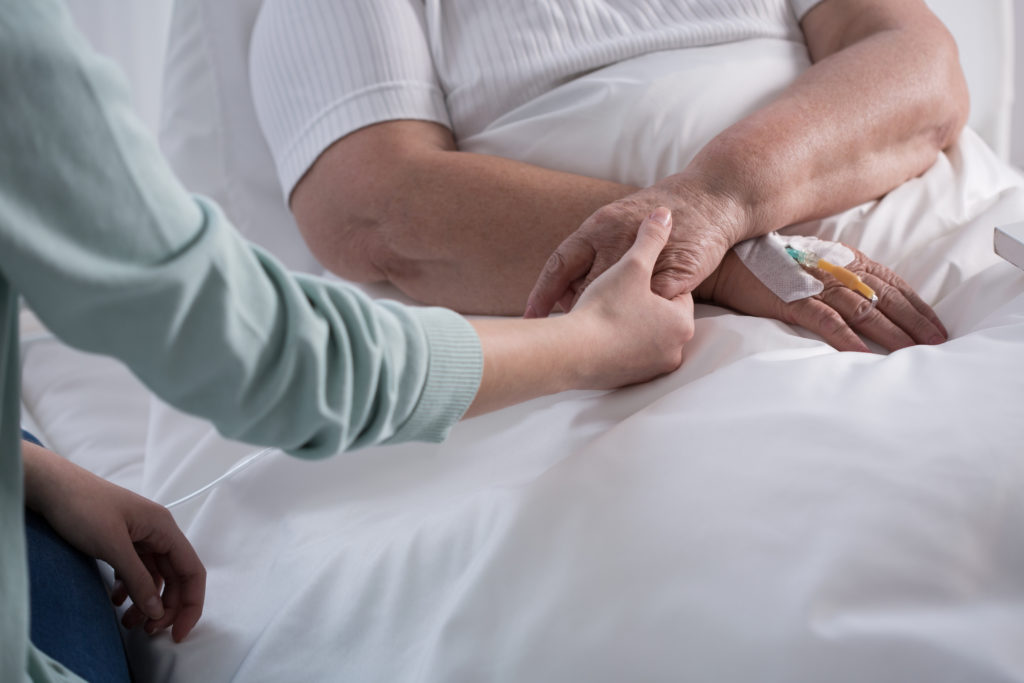When in hospice care, individuals deserve comfort and dignity, and effective pain management plays an integral role in achieving these goals. In this blog, we’ll shed light on how pain management in hospice is addressed.
What Are the Different Types of Pain That Patients May Experience in Hospice?
In hospice care, patients may experience various types of pain, each with its own characteristics and implications. Understanding these different types of pain is essential for effective pain management and ensuring the comfort of individuals nearing the end of life.
There are three primary categories of pain commonly encountered in hospice settings: physical pain, emotional or psychological pain, and spiritual pain.
Physical Pain:
- Nociceptive Pain: Nociceptive pain arises from actual or potential tissue damage, such as injuries, inflammation, or pressure ulcers. It is often described as aching, throbbing, or sharp and can be localized to specific areas of the body.
- Neuropathic Pain: Neuropathic pain results from damage or dysfunction of the nerves and the central nervous system. It is characterized by shooting, burning, or tingling sensations.
- Visceral Pain: Visceral pain originates from the internal organs, such as the stomach, liver, or intestines. It is often described as a deep, dull ache or pressure and can be caused by tumors, organ failure, or bowel obstructions.
- Bone Pain: Bone pain is a common experience for patients with cancer that has spread to the bones or for those with conditions like osteoporosis. It is typically described as a deep, dull ache and may worsen with movement or pressure.
- Phantom Pain: Phantom pain refers to sensations of pain that are perceived in a body part that has been amputated or is no longer present. It can be challenging to manage and may require a combination of medications, physical therapies, and psychological support.
Emotional or Psychological Pain:
- Anxiety: Many patients in hospice may experience anxiety due to the uncertainty surrounding their condition, fear of death, or concerns about their loved ones’ well-being. Anxiety can manifest as restlessness, excessive worrying, difficulty sleeping, or a sense of impending doom.
- Depression: Patients may experience symptoms of depression, such as sadness, loss of interest or pleasure, feelings of hopelessness, changes in appetite or sleep patterns, and thoughts of worthlessness.
- Grief: Both patients and their loved ones may experience anticipatory grief, mourning the future losses and the changes that accompany the end of life. Grief can involve feelings of sadness, sorrow, anger, guilt, and a sense of emotional heaviness.
- Fear: Fear can stem from concerns about pain, loss of independence, the dying process, or what lies beyond death.
Spiritual Pain:
- Loss of Meaning: Patients may grapple with a loss of meaning or purpose in their lives and question the significance of their experiences, relationships, or achievements, leading to a sense of emptiness or existential distress.
- Questioning Beliefs: Patients may question their religious or spiritual beliefs and experience doubt, conflict, or a reevaluation of their beliefs.
- Unresolved Spiritual Concerns: Some patients may have unresolved spiritual concerns or unfinished spiritual matters, including seeking forgiveness, making amends, or finding reconciliation with their beliefs or spiritual practices.
- Loss of Connection: Patients may feel a loss of connection, either with their own sense of spirituality, with their religious community, or with a higher power. This disconnection can lead to feelings of isolation, abandonment, or spiritual emptiness.
- Existential Angst: Patients may grapple with profound philosophical or existential dilemmas, such as the purpose of suffering, the nature of identity, or the concept of an afterlife.
What Types of Medications Are Commonly Used To Manage Pain in Hospice?
Pain management and treatment in hospice care often involve a combination of medications and supportive therapies tailored to the individual’s needs.
Some of the most commonly used medications in hospice include the following:
- Opioids: Opioids, such as morphine, oxycodone, or fentanyl, are frequently prescribed for moderate to severe pain management. They work by binding to opioid receptors in the body, reducing the perception of pain.
- Non-Opioid Analgesics: Non-opioid medications, such as acetaminophen (Tylenol) and nonsteroidal anti-inflammatory drugs (NSAIDs) like ibuprofen or naproxen, may be used to manage mild to moderate pain.
- Adjuvant Drugs: Adjuvant medications are used with opioids or as standalone therapies to enhance pain relief or manage specific pain symptoms.
- Local Anesthetics: Local anesthetic agents, such as lidocaine patches or gels, can relieve localized pain for conditions like neuropathic pain or painful wounds.
- Bisphosphonates: Bisphosphonates, such as zoledronic acid or pamidronate, may be used to manage bone pain caused by cancer that has spread to the bones.
What Types of Non-Pharmacological Pain Management Methods Are Used in Hospice?
In addition to pharmacological pain management, non-pharmacological methods are also used in hospice care.
Some of the most common options for these types of non-pharmacological interventions include:
- Physical and Occupational Therapy: Physical and occupational therapy can help increase independence, improve mobility, reduce muscle tension, and alleviate certain types of pain, such as musculoskeletal pain.
- Massage Therapy: Gentle massage techniques can promote relaxation, improve circulation, and relieve muscular tension, offering pain relief and comfort.
- Acupuncture: Acupuncture involves the insertion of thin needles into specific points on the body to alleviate pain by stimulating the release of endorphins and modulating pain signals.
- Music Therapy: Music therapy involves using music and sounds to promote relaxation, reduce anxiety, and enhance emotional well-being, which can indirectly contribute to pain relief.
- Psychological Support: Counseling, psychotherapy, or mindfulness-based approaches can help patients manage emotional distress, reduce anxiety, and enhance coping mechanisms, influencing pain perception and overall well-being.
- Heat or Cold Therapy: Applying heat or cold to painful areas can provide temporary relief. Heat therapy, such as warm compresses or heating pads, helps relax muscles and increase blood flow, while cold therapy, such as ice packs or cold wraps, can reduce inflammation and numb the area.
High-Quality Hospice Services at West Michigan Hospice
Here at West Michigan Hospice, we believe that hospice care is more than just end-of-life care, and we’re here to provide all the comfort and support you or your loved one needs to live peacefully. We provide top-of-the-line hospice pain management, and our team works diligently to develop individualized care plans. Contact our team to learn more about our services and how to enroll your loved one in them.

